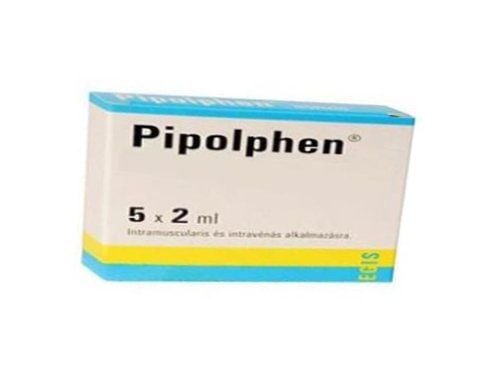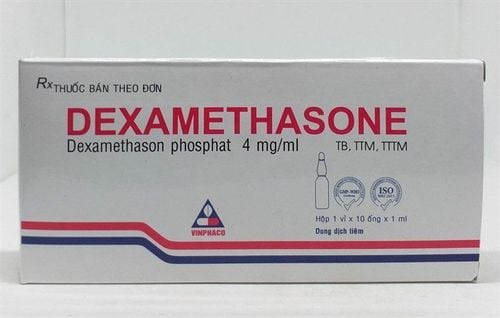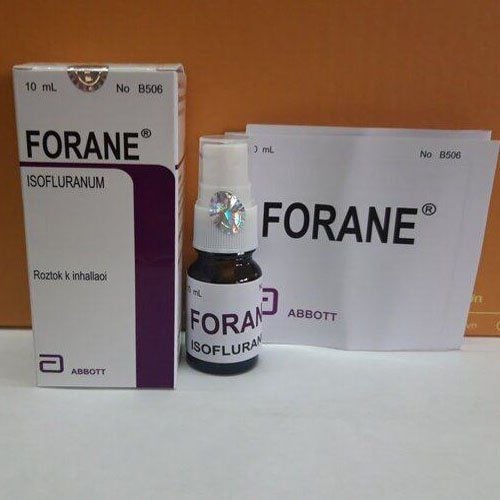This is an automatically translated article.
Sevoflurane is a drug used for inhalation anesthesia. When using Sevoflurane, you need a prescription from a doctor or medical professional. To better understand what Sevoflurane is, please refer to the article below.1. Uses of Sevoflurane
Sevoflurane is used in the category of inhalation anesthesia. This is a liquid formulation. Therefore, Sevoflurane is colorless and volatile in the air. The main active ingredient used in Sevoflurane is Sevoflurane.
Sevoflurane helps to convert halogens when absorbed by the body in liquid form and does not cause explosion or fire. According to medical studies, sevoflurane may be more effective than desfluran. In addition, the taste of the drug is not pungent and limits unwanted irritation to respiratory health.
Patients in the pre-anesthesia phase will use an inhaler followed by a slow muscle relaxant. After the drug takes effect, the doctor can perform surgery on the patient without using some other drugs that block nerves or muscles.
Although it is an anesthetic used for surgery, Sevoflurane does not have an analgesic effect. Therefore, caution may be required when administering the drug if the patient needs to experience pain. Be sure to discuss this with your doctor carefully to make sure the medication is most effective.
Sevoflurane is not on the prescription list but should be used under the supervision of a medical professional. Usually anesthetic drugs can affect the patient more or less. Therefore, you should inform your doctor if you need to use anesthetic for treatment.
2. Dosage and how to take Sevoflurane
Sevoflurane is an anesthetic by breathing in the patient. Therefore, before using the drug, you need to tell your doctor to change the vaporizer. Specialized medical vaporizers will ensure that the dose is controlled to avoid errors when the patient inhales a large or prolonged amount of medicine.
Depending on each patient, the amount of medication will be adjusted accordingly. If the body changes or shows signs of dehydration in some organs, replace the CO2 absorber. The dose of sevoflurane used for anesthesia will be based on the patient's condition and age to consider.
Children: When starting sevoflurane anesthesia for young children, the drug concentration should be adjusted at 7% in which oxygen or a mixture of oxygen and nitrous oxide is required in combination with the drug. Usually, the coma will appear after 2 minutes and is very mild. Patients who want to maintain a coma need to adjust the drug concentration to 0.5 - 3% and can use it alone or add nitrous oxide. In the case of maintenance coma treatment, oxygen will not be used. Adults: Adults when using sevoflurane anesthesia will use it through a mask and at the same time, the drug concentration is 5% lower than that of children and with additional oxygen and nitrous oxide support. in terms of use and prolonged coma maintenance dose is also used similarly to young children. Other patients: The elderly are dosed with the maintenance anesthetic dose for the patient. If the patient has moderate MAC (alveolar concentration) levels should be adjusted down to 1.4 % Sevoflurane. If both nitrous oxide and oxygen are used at 65% and 35%, the 0.7% concentration of sevoflurane should be used.
3. Precautions before taking Sevoflurane
Sevoflurane anesthetic should be used under the supervision and monitoring of a doctor to avoid irritation or shock after use. Patients should actively check and assess the risk of drug effects on themselves based on past allergic problems. If the drug is contraindicated, please notify the doctor to consider changing the anesthetic drug more suitable.
Before using anesthetics through inhalation, it is necessary to prepare a dedicated spray bottle. The amount of anesthetic received by the body will be controlled by the aerosol and kept the concentration stable within the allowable range. The amount of sevoflurane should not exceed 2 times the MAC number. Normally the speed will be controlled in the range of 1-2 liters per minute.
Blood pressure is a factor that affects anesthesia with sevoflurane. Therefore, you should check your blood pressure to promptly handle if there are signs of hypotension during the use of Sevoflurane. One way to limit that effect is to lower sevoflurane levels when blood pressure drops.
Elderly people and patients with liver problems should be careful with the concentration of sevoflurane used. Although the drug effect according to the study has not been found to be dangerous, the drug concentration for this group of subjects will often be lower than the usual prescribed dose.
4. Sevoflurane side effects
Most patients using sevoflurane have few side effects. But some common side effects may also appear such as:
Facial flushing, dizziness Mental confusion leading to agitation Decreased heart rate Increased heart rate Drowsiness Lower blood pressure Cough Nausea Increased salivation Decreased Respiratory capacity Respiratory system dysfunction Airway obstruction Laryngeal spasms In addition to the common reactions some reactions are rare. However, the detection frequency is low, but the danger is rated at a high level. Therefore, you need to prevent some side effects such as:
Psychological disorders Atrioventricular dysfunction Swelling in the lungs Decreased ability to urinate Abnormal urine color Increased pressure in the skull The heart may stop beating Hypoxia threatens respiratory capacity Hepatitis Liver necrosis Liver dysfunction Pancreatitis Interstitial nephritis Hyperkalemia Urticaria Urticaria Hyperglycemia Various other adverse reactions rare or unspecified. right. However, the extent of their impact on patient health is quite serious. Therefore, you need to be careful every time you are treated with sevoflurane. At the same time, always check your health regularly to avoid serious effects.
5. Interactions with Sevoflurane
Sevoflurane should not be used together with any other drug without careful calculation and consideration. In some cases, drugs of the same class should not be taken at the same time. However, sevoflurane can be used for anesthesia with intravenous anesthetics such as propofol and barbiturates.
In surgery, benzodiazepines and opioids are thought to be used with sevoflurane. However, if they do affect alveolar MAC, other inhalation anesthetics should be considered to avoid dangerous respiratory side effects.
The interaction of Sevoflurane drugs can indirectly affect the use and ability to work when the patient uses the drug. To avoid unwanted interactions, the doctor will usually check the general health and discuss with the patient to rule out potential problems or screen the patient early for adverse reactions. drug reactions that pose serious health risks.
Above is some information that is clear what Sevoflurane is for your reference. Please note that every drug has its own indications. You need to consult your doctor first and proactively check your health periodically to minimize negative health effects.













